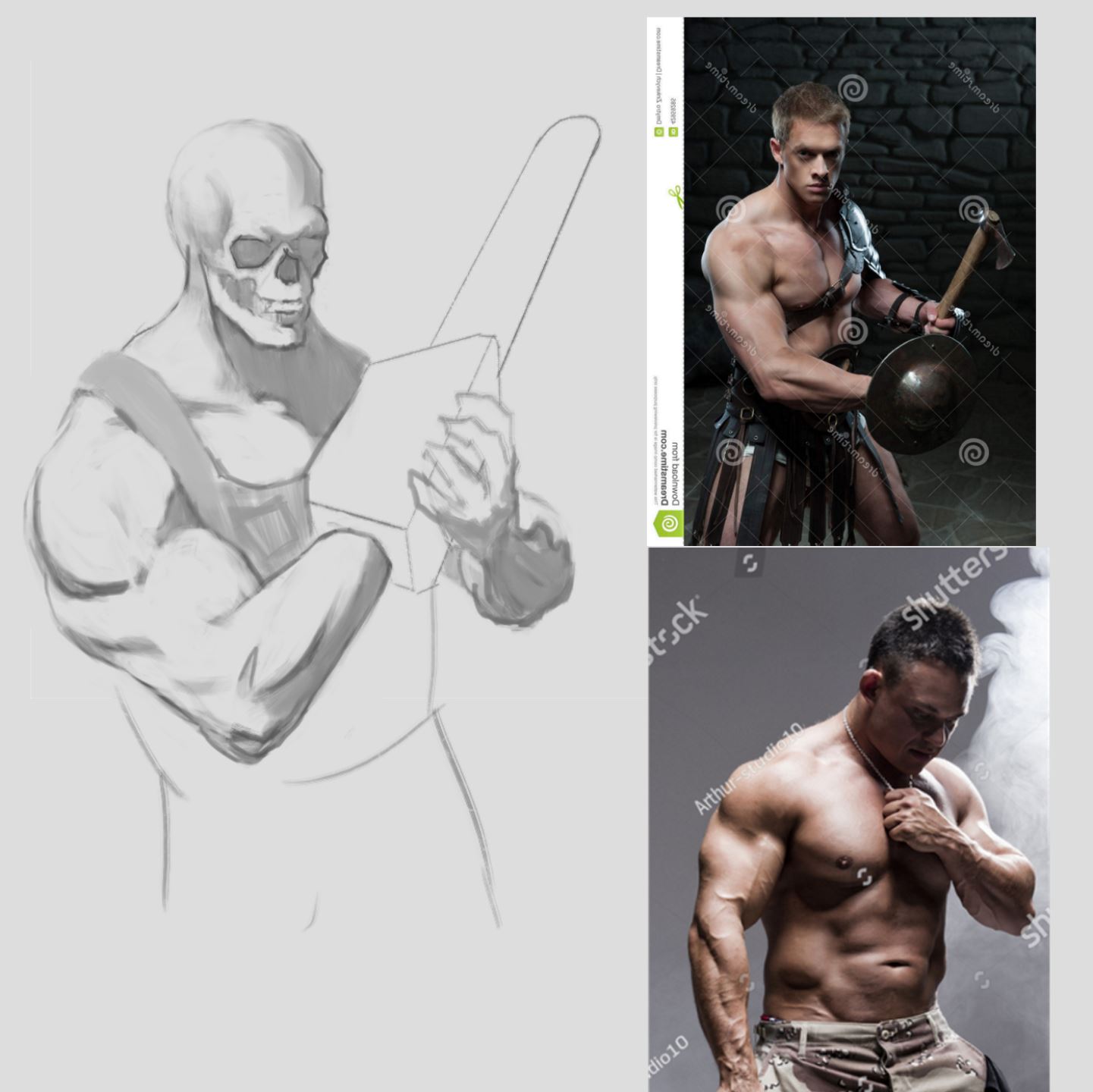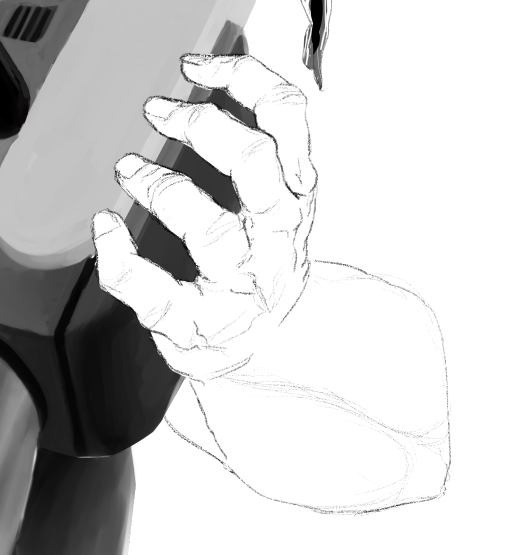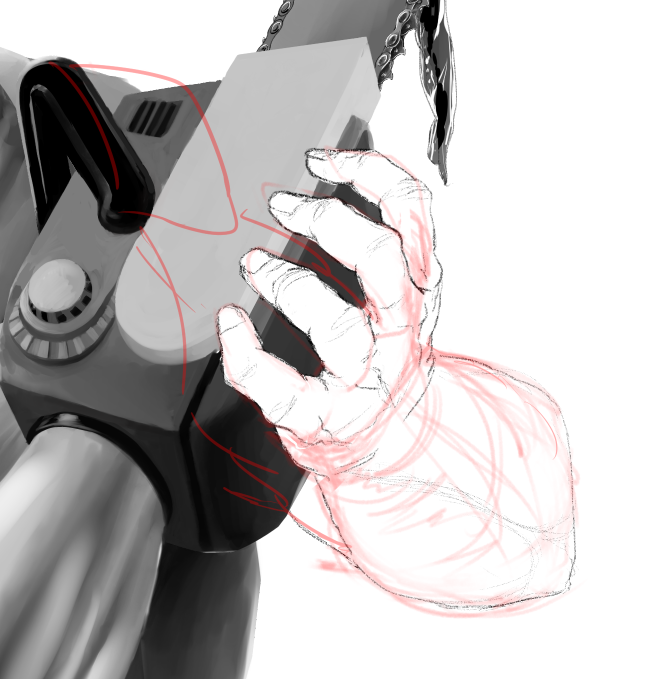Heya, I think the largest issues with this are not that left arm. It's actually fairly passable as is, though perhaps the fingers could be better aligned to interact with the surface of the actual box form of the chainsaw more accurately.
I think the major issue is one of form and simplification. You have shown very ropy forms for every individual muscle due to outlining all major form edges with dark and fairly defined edges. You should pay more attention to the major forms that would be visible of the arm first and imply more. You probably know the anatomy is off. Better go back and refresh / study those muscle insertions and main forms. If you don't have the knowledge, use appropriate and well lit reference. The chainsaw holding shoulder appears dislocated and is not exhibiting appropriate depth.
The skull is also facing straight on and reads as completely flat. Granted it's a difficult situation to draw something face on and still read with depth, you really have to pay attention to the areas that recede/wrap around vs the ones that come forward. This is mostly done with edge control (receding wrapped forms usually have softer edges and harder edges for pinched or more defined forms such as around the eye sockets.
I re-did the sketch paying attention to those basic things. I changed the head angle slightly to make it easier for me haha, but also the head position seemed a bit off. I just adjusted to the top ref. I also simplified shadow shapes/values at first, to really focus on the major forms. As you get this right, you can very easily refine further, but try make the biggest forms read first simply as much as possible first. How detailed you go after that is simply a matter of preference.
WRT values, try to avoid doing value sketches against a 100% white (or dark) background, this will skew your value judegments. Work on a lightly toned background at first.
You seem to be aware that you shouldn't rush ahead on a poor foundation drawing. It needs to be solid. If the drawing is not then all the major issues will need to be fixed later and it is much harder and time consuming in the end. Digital allows this behaviour much to easily. Don't let it be a crutch. Working in traditional for the drawing is probably best if you are early on in learning, but if you don't want to do that, I highly recommend not using undos/skipping fundamental stages, or relying on the power of digital tools to be able to endlessly change or fix things down the line. The tools can be used for sure, but not if it helps us to be lazy before we have the required knowledge and mileage to be able to skip or shortcut any steps. Don't keep making this mistake as it really will be a disservice to you and effective improvement in the future. Keep all the constraints of each piece very tight up front esp if using digital, almost mimicing traditional and you will likely also improve a lot quicker. If you execute the drawing well with all forms and shadows mapped well simply, rendering really almost takes care of itself. Hope that helps!












